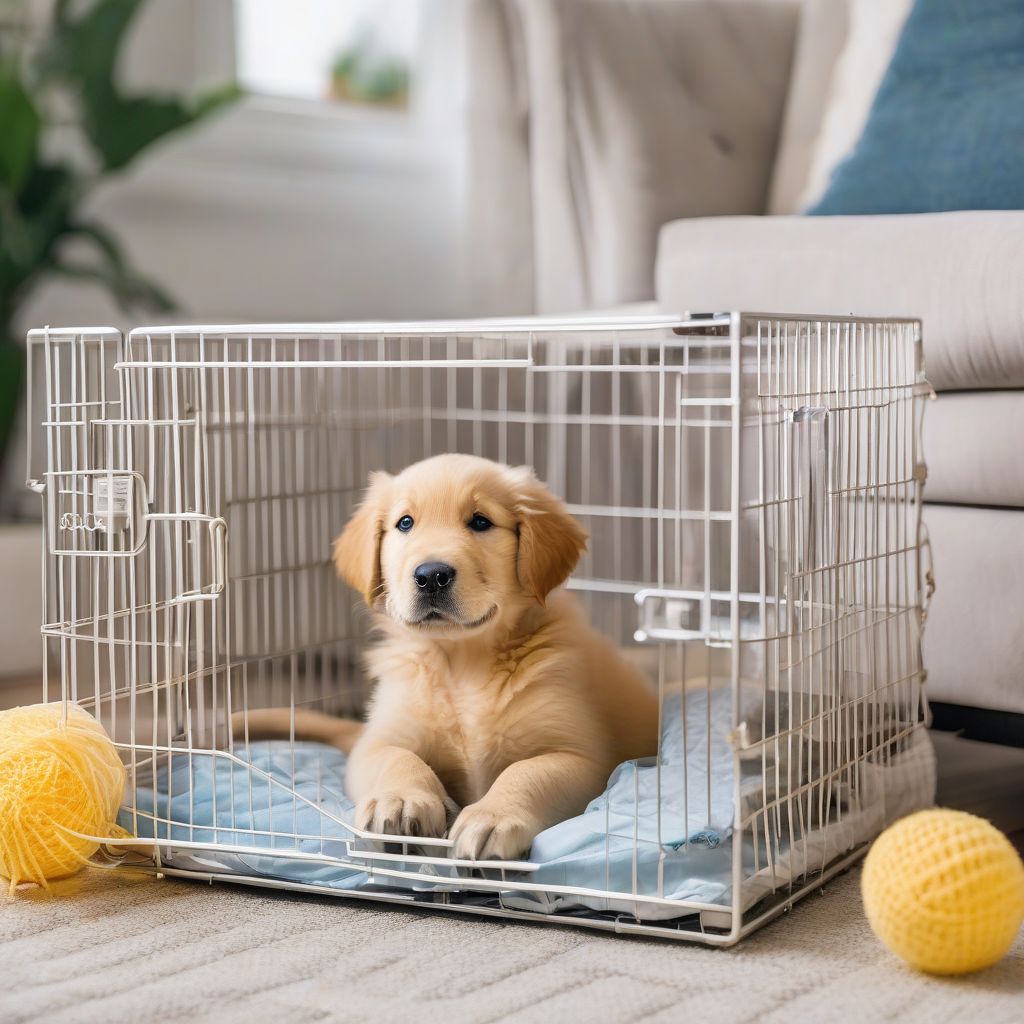Bringing a new furry friend home is exciting! But ensuring they settle in comfortably and happily often involves crate training. Many pet owners initially see crates as confinement, but with the right approach, a crate can become your pet’s safe haven, a place of comfort, and a valuable tool for housetraining. This comprehensive guide will walk you through how to crate train your pet effectively, transforming the process into a positive experience for both of you.
Understanding the Benefits of Crate Training
Before diving into the how-to’s, let’s explore why crate training is beneficial. Think of a crate as a den, mimicking the natural instinct of dogs and cats to seek out enclosed spaces. This can be incredibly soothing, especially in a new and potentially overwhelming environment.
Security and Comfort
Crates provide a secure and predictable space, reducing anxiety and promoting relaxation. Dr. Emily Parker, a veterinarian specializing in animal behavior, notes, “A properly introduced crate can act as a sanctuary for pets, offering them a sense of control and security.” This is especially helpful for puppies and kittens adapting to a new home, or for pets who are easily stressed by loud noises or changes in routine.
Housetraining Made Easier
Crates are invaluable for housetraining. Dogs and cats instinctively avoid soiling their den. By gradually increasing the time spent in the crate, you can encourage your pet to hold their bladder and bowels, leading to faster and more effective housetraining.
Travel and Safety
A crate-trained pet is a safer traveler. Whether it’s a trip to the vet or a cross-country move, a familiar crate provides comfort and reduces stress during transport. This also ensures their safety in the car, preventing them from becoming a distraction to the driver.
Choosing the Right Crate
Selecting the appropriate crate is crucial for your pet’s comfort and the success of your training. The crate should be large enough for your pet to stand, turn around, and lie down comfortably. Avoid overly large crates, as this can defeat the purpose of housetraining.
Types of Crates
There are several types of crates available:
- Wire crates: These offer good ventilation and visibility.
- Plastic crates: These provide more privacy and are often better for anxious pets.
- Soft-sided crates: These are lightweight and portable, but less durable than wire or plastic crates.
Step-by-Step Crate Training Guide
Now that you have the right crate, let’s begin the training process. Remember, patience and positive reinforcement are key.
1. Introducing the Crate
Make the crate a positive experience from the start. Place it in a common area where your pet spends time and leave the door open. Entice your pet inside with treats, toys, or a comfortable bed. Let them explore the crate at their own pace, without forcing them inside.
2. Feeding Meals in the Crate
Once your pet is comfortable entering the crate, start feeding their meals inside. This creates a positive association with the crate. Initially, place the food bowl just inside the door. Gradually move it further back as your pet becomes more comfortable.
3. Closing the Door Gradually
Start with short periods of time with the door closed, just a few minutes at first. Stay nearby and reassure your pet with a calm voice. Gradually increase the duration as your pet becomes more comfortable.
4. Crate Time While You’re Home
Even when you’re home, have your pet spend short periods in the crate. This helps them understand that the crate isn’t just for bedtime or when you’re away.
5. Crate Time While You’re Away
Start with short absences and gradually increase the duration. Ensure your pet has been exercised and has eliminated before crating them. Avoid making a fuss when you leave or return, as this can increase anxiety.
Dealing with Crate Training Challenges
While crate training is generally effective, you might encounter some challenges along the way.
Whining and Barking
If your pet whines or barks in the crate, avoid immediately letting them out, as this can reinforce the behavior. Wait for a pause in the whining or barking before opening the door.
Accidents in the Crate
Accidents can happen, especially in the early stages of training. Clean the crate thoroughly to eliminate odors. Avoid scolding your pet, as this can create a negative association with the crate.
Separation Anxiety
If your pet exhibits signs of severe anxiety, such as excessive panting, drooling, or destructive behavior, consult with a veterinarian or certified professional dog trainer.
 Effective Crate Training for Dogs
Effective Crate Training for Dogs
Conclusion
Crate training, when done correctly, can be a highly effective way to provide your pet with a safe, comfortable space while also facilitating housetraining and travel safety. Remember that patience, consistency, and positive reinforcement are the keys to success. By following the steps outlined in this guide and addressing any challenges calmly and effectively, you can create a positive crate training experience for both you and your furry friend. Share your crate training experiences in the comments below! We’d love to hear about your successes and any tips you’ve discovered along the way. For more resources on pet care and training, visit our blog.



